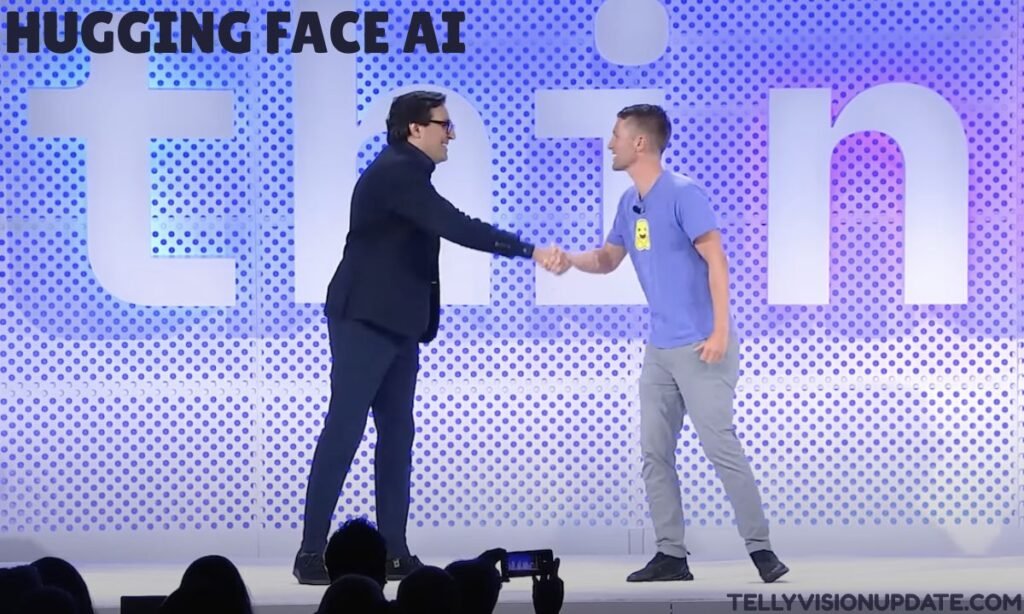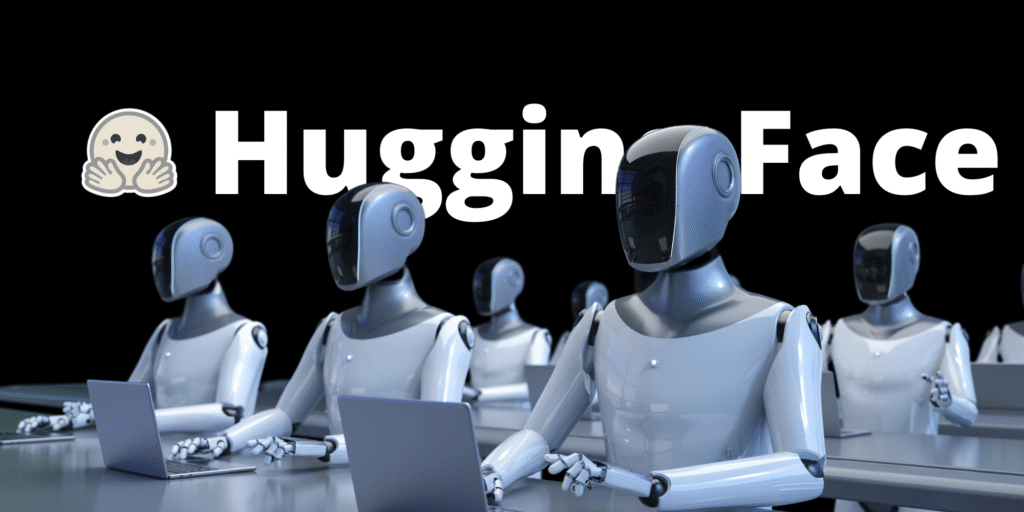
hugging face ai
Artificial Intelligence is on the rise and at one of the platforms that have become a pioneer in an open-source AI is Hugging Whether it is potent NLP models, collaborative ML models, or simply the way researchers, developers and businesses can rely on artificial intelligence, Hugging Face has transformed the landscape.
So, in this blog, we will find out everything about Face AI, its vision and products, its impact on industries, developers, and the future of the AI innovation in 2025 and beyond.
Table of Contents:
What is the Hugging AI?
Stage of Origin and Vision of Hugging Face
Hugging Face Products and Tools of Keys
Hugging is becoming a buzzword in 2025 Why
Industrial Use Cases
Hugging Face Transformers unleashed
Other AI Frameworks Compared
Getting Started
Hugging Face roadmap and Futures
Closing Remarks: Why You need to Care About Hugging Face
What is Hugging Face AI?
The Hugging Face AI is an open-source AI platform that is well-recognized to deliver accessible machine learning tools, particularly natural language processing (NLP). It has highly transformer-centric models on platforms that are freely accessible to developers, researchers, and companies.
Hugging Face is fueling a new generation of AI applications, which includes chatbots and language translators, sentiment analysis and coding assistants.
The Origin and Vision Behind Hugging Face
Founded in 2016, Hugging Face started as a chatbot startup. However, by 2018, it pivoted to open-source machine learning and released the Transformers library — a game-changer for NLP.
The company’s mission is simple yet revolutionary: “Democratize AI by making it open, ethical, and accessible to all.”
Today, Hugging Face is supported by top-tier investors and collaborates with tech giants like Microsoft, AWS, and Google Cloud.
Key Products and Tools by Hugging Face
Hugging Face offers a range of tools that cater to every level of machine learning development:
1. Transformers Library
An open-source library with thousands of pre-trained models for NLP, computer vision, speech, and more.
2. Datasets
A powerful repository with 30,000+ datasets for training and fine-tuning models.
3. Hub
The Hugging Face Model Hub allows developers to share and download community-driven models with ease.
4. AutoTrain
A no-code platform to fine-tune and deploy machine learning models.
5. Inference API
Serve your models in production-ready environments with scalable inference APIs.
Why Hugging AI is Trending in 2025
Here’s why Hugging Face AI is leading headlines in the tech world:
- Open Source Movement: Hugging Face is championing transparent and ethical AI.
- 💬 Dominance in NLP: It provides cutting-edge models like BERT, GPT-2, T5, and RoBERTa.
- Collaborative Ecosystem: Integration with tools like PyTorch, TensorFlow, ONNX, and JAX.
- Community-first Approach: Thousands of contributors, open discussions, and shared progress.
As AI becomes central to industries like healthcare, finance, and marketing, Face AI is becoming the go-to platform for real-world solutions.
Use Cases Across Industries
1. Finance
Use Hugging Face models for fraud detection, risk analysis, and financial forecasting.
2. Customer Support
Chatbots and virtual assistants powered by Hugging AI offer smarter, faster, and more human-like interactions.
3. Healthcare
Automated medical document analysis and predictive modeling in diagnostics.
4. E-Commerce
AI-powered product recommendations, review analysis, and voice assistants.
5. Education
Create intelligent tutoring systems and grading assistants using Hugging Face NLP models.
Hugging Face Transformers Explained
Transformers are the backbone of Hugging Face
They use attention mechanisms to understand contextual relationships in data — especially text. This allows models like BERT, GPT, and T5 to deliver human-like language comprehension.
Hugging Face provides tools to:
- Fine-tune pre-trained models
- Convert them into different formats (ONNX, TorchScript)
- Deploy them in production environments
The Transformers library is compatible with Python, PyTorch, and TensorFlow, making it ideal for both researchers and enterprise use.
Hugging Face vs Other AI Frameworks
| Feature | Hugging AI | TensorFlow | PyTorch |
| NLP Focus | ✅ Strong | ❌ Limited | ❌ Limited |
| Pretrained Models | ✅ 100,000+ | ❌ Few | ❌ Few |
| Open-Source Community | ✅ Huge & Active | ✅ Medium | ✅ Medium |
| Ease of Use | ✅ Beginner Friendly | ❌ Complex | ✅ Developer Friendly |
| No-code Platform | ✅ AutoTrain | ❌ No | ❌ No |
Hugging Face wins big in ease of use, NLP dominance, and community support.
How to Get Started with Hugging AI

- Install Transformers:
Load a Pretrained Model:
Use the Hub:
Go to and explore thousands of ready-to-use models.
- Train Your Own Model:
Use AutoTrain or integrate with PyTorch to fine-tune models for your specific use case.
Future Trends & Roadmap for Hugging AI
Looking ahead to 2025 and beyond, Hugging AI is expected to expand into:
- Multimodal AI (Text + Image + Audio)
- Federated Learning for privacy
- Open-weight alternatives to GPT-4 and Claude
- Enhanced AI ethics and regulation frameworks
- Increased support for edge AI deployment
Their partnership with AWS, Microsoft, and Google ensures scalability and enterprise-level reliability.
Conclusion: Why Hugging Face AI Deserves Your Attention
In a world dominated by closed AI systems, Hugging Face AI stands out as the torchbearer for open, ethical, and accessible machine learning.
Whether you’re a student, developer, researcher, or entrepreneur — Hugging Face offers the tools, resources, and community to build the future of AI.
From its user-friendly tools and transformers library to its commitment to democratized AI, Hugging Face is not just trending — it’s defining the next decade of innovation.
So if you’re not already using Hugging now is the perfect time to dive in and explore the ecosystem reshaping artificial intelligence in 2025 and beyond.
Read More Blogs :-





